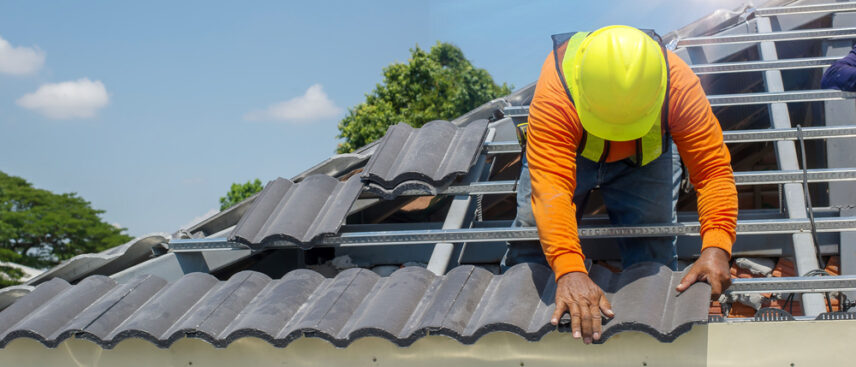Your roof is your home’s first line of defense against the elements, whether it be battering winds, pouring rain, or scorching sunshine. It’s one of the most crucial components of your home, protecting you from Mother Nature’s wrath and ensuring your living space remains safe and comfortable. However, time and damage can inhibit your roof’s ability to do its job effectively.
Recognizing the signs that indicate a failing roof can help you take proactive steps to address the issue before it becomes a major problem. While pricey, a new roof installation offers many benefits, and since you can hire a roofer to handle the replacement for you, you don’t have to sweat the details.
Signs You Need a New Roof
When your roof needs replacing, you’ll likely notice a few telltale indicators. Recognizing its age and dwindling lifespan is sometimes enough, but other indicators might require further inspection.
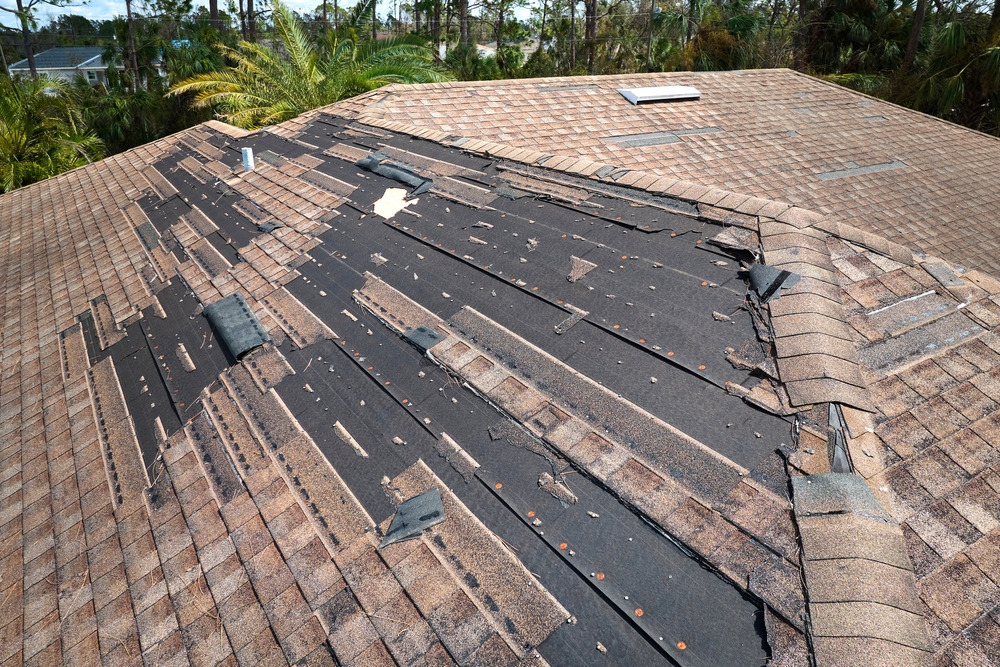
Age of Your Current Roof
Like any part of your home, your roof will eventually wear out. Most roofing materials have a specific lifespan:
- Asphalt shingles typically last between 20 and 25 years.
- Wood shingles may last up to 30 years.
- Metal roofings can withstand anywhere from 40 to 70 years.
- Tile roofing, such as slate or terracotta, can last over 50 years.
If your roof is nearing the end of its expected lifetime, even if it doesn’t appear to have significant damage, it’s wise to start planning for a replacement.
Visible Damage
Visible damage is a clear indicator that your roof might need replacing. Common issues include:
- Leaks: Even a small roof leak can cause significant damage. The first signs of a roof leak are generally water stains and damage in the attic, ceilings, or walls.
- Missing shingles: Gaps in your roofing material left by missing shingles can lead to leaks and further damage throughout your attic and home.
- Sagging: A sagging roof is often a sign of structural damage that requires immediate attention.
Curled or Cracked Shingles
Shingles that are curling, cracking, or blistering can no longer provide adequate protection for your home. In many cases, this type of damage results from age or harsh weather conditions, like scorching summer heat or harsh storms. Check your roof for this type of damage regularly—if you notice a significant number of damaged shingles, it may be time for a roof replacement.
Moss or Algae Growth
While moss or algae growth atop your roof may seem harmless, they can wreak havoc on your roof over time. Moss can trap moisture against your roof, resulting in the rotting and decay of your roof material. Conversely, algae can cause shingles to deteriorate, opening the door to a host of moisture problems and leaks.
While regular cleaning can help keep your roof algae- and moss-free, persistent growth can be a sign that you need a new roof.
Benefits of Installing a New Roof
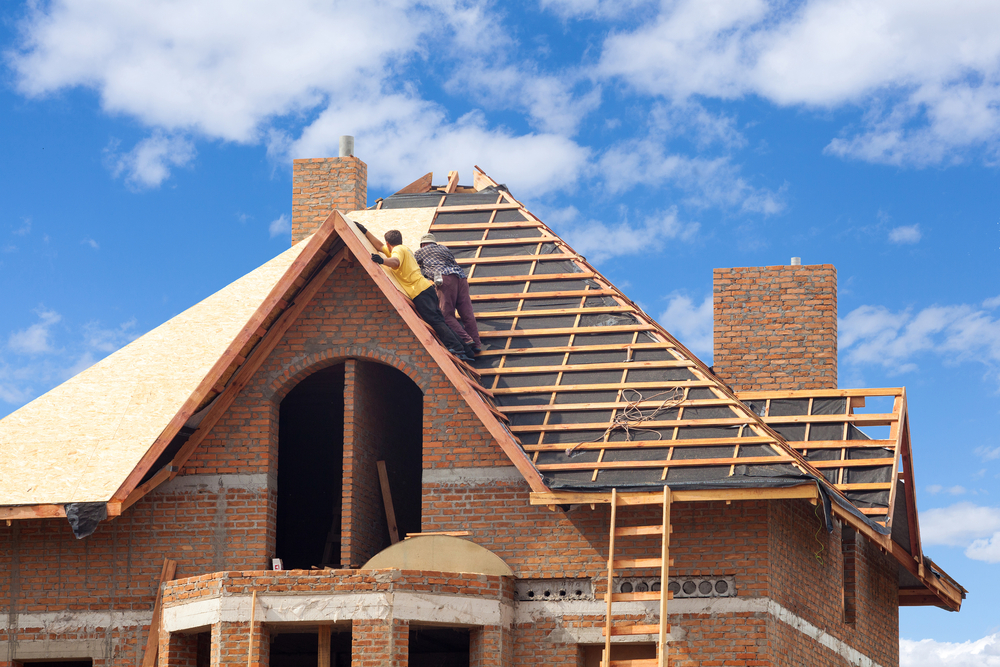
Beyond solving immediate problems, such as sagging or significant water damage, a new roof offers multiple advantages, including:
- Increased curb appeal and home value: A new roof can dramatically enhance your home’s curb appeal, which is important if you plan to sell your home. New roofs are strong selling points and can even increase your property value by more than 60%!
- Improved energy efficiency: A new roof constructed with modern “cool” roofing materials can improve your home’s energy efficiency by reflecting sunlight to absorb less solar energy. These roofs feature lighter colors, which naturally reflect more light than darker options.
- Enhanced protection from the elements: A new roof provides better protection against harsh weather conditions, such as heavy rain, hail, and high winds. Advanced roofing materials and techniques ensure your home remains cozy and dry, regardless of the weather.
- Peace of mind and long-term durability: Knowing your roof is in tip-top shape can relieve stress and give you peace of mind since it is built to last. The durability of modern roofing materials ensures you don’t need to worry about leaks, structural damage, or frequent repairs.
Popular Materials for New Roofs
When choosing a new roof, it’s important to consider each type of roofing material and select an option best suited to your climate and needs. Read the full guide on roofing materials.
Wood & Asphalt Shingles
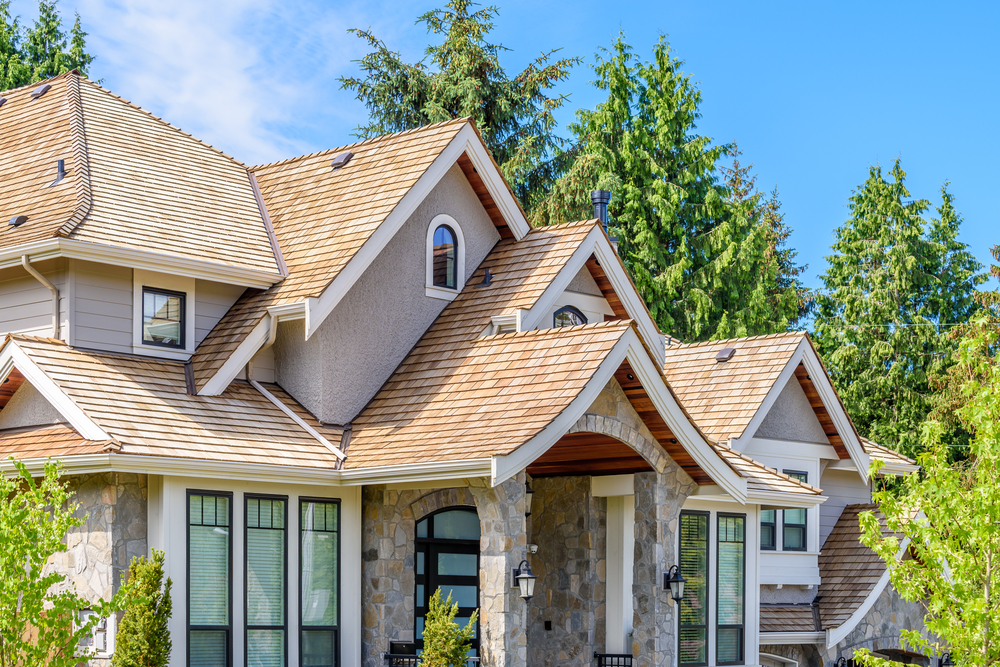
Roofing shingles come in various materials, styles, and colors. Asphalt shingles are a standard pick among homeowners who want a budget-friendly, easy-to-install option that comes in plenty of colors and styles.
If you like a rustic look, you may appreciate wood shingles, which mesh perfectly with natural, traditional-styled aesthetics. These shingles offer exceptional insulation properties and lengthy lifespans, but these perks come at a steeper cost, so they’re not as widespread as asphalt shingles.
Learn more about roof shingles.
Metal Roofing
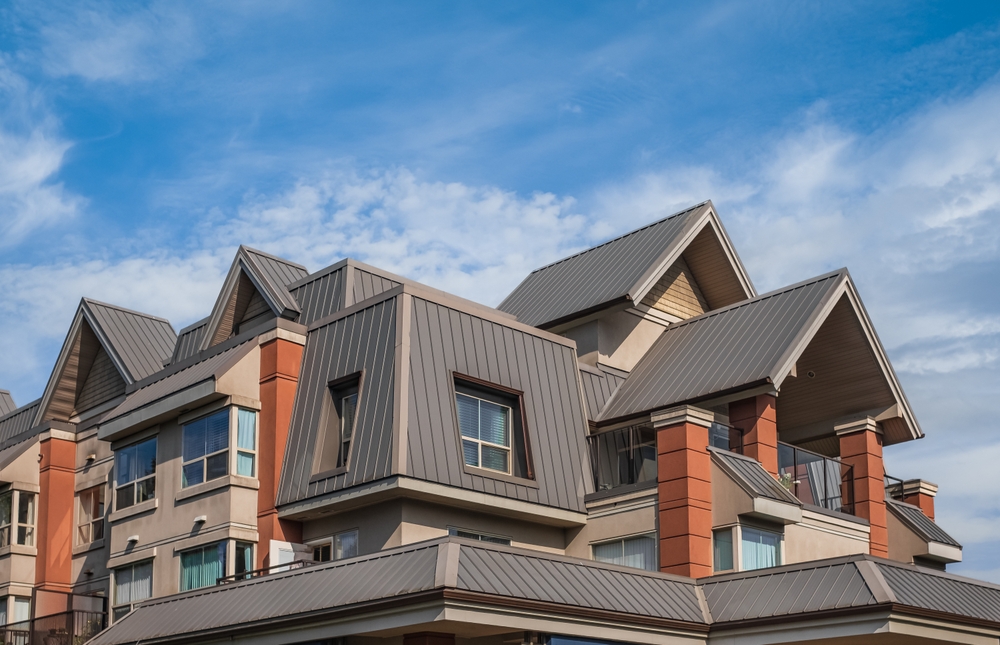
The shiny, cohesive look of metal roofing is another popular option. This roofing material offers a perfect balance of perks and aesthetic allure. It’s durable, long-lasting, and extremely weather resistant, making it a go-to pick for homeowners across the U.S., from arid climates of the Southwest to cool climates of the North.
Plus, since it can be recycled at the end of its lifespan, it’s an eco-friendly option.
Learn more about metal roofing.
Tile Roofing
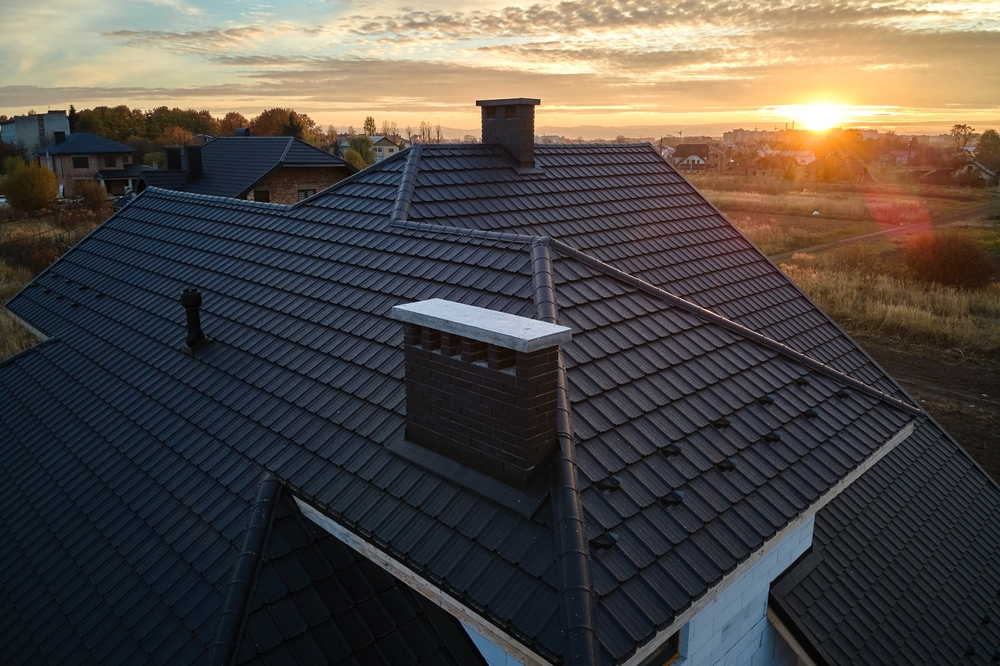
In the Southwest and Coastal South, many homes feature tile roofing. Many homeowners in these areas love the look of traditional tile, whether it be terracotta or slate.
If you appreciate the Mediterranean look and burnt orange hue of baked clay tiles, terracotta tiles might be the perfect fit. These are a staple for their distinctive allure, remarkable durability, and excellent insulating properties.
On the other hand, if you enjoy the soothing neutrals of cool grays, slate tiles might be a great fit. Like terracotta tiles, slate tiles are incredibly durable and favored for their classic appearance. Additionally, they can last decades, further enhancing their appeal.
Learn more about tile roofing.
How Much Does a New Roof Cost?
Very few roofing projects are exactly alike. Many feature different materials, sizes, layouts, and complexities, so the costs surrounding new roof installations can vary dramatically. Most U.S. homeowners pay between $10,000 and $25,000 for their new roofs.
Of course, since each roofing project has different specifics, the cost might be higher or lower than this average range. A few factors that impact the cost of installation include:
- Material: The material you choose has a significant impact on the price. Certain materials, like premium slate or metal, typically cost more than run-of-the-mill options, like asphalt shingles. So, if you opt for slate tiles over asphalt shingles, you’ll likely pay considerably more.
- Size: The size of your home and roof is a key contributing factor. The larger your home, the pricier it’ll be, as bigger roofs require more materials and labor to complete.
- Complexity: If your home has a complicated roof layout with steep slopes, multiple angles, or an intricate design, your new roof will likely be more expensive than someone with a simple roof. Complicated roofs can present unique challenges and demand more time to complete, making the project more expensive overall.
These aren’t hard rules. For example, a large roof might not always be more expensive than a smaller one. If the large roof has a simple layout and utilizes cheaper materials, it might be more affordable than a smaller home with a complex layout and high-end materials.
To ensure you get the best value for your money, get customized quotes from multiple reputable roofing contractors in your area. This way, you can get a better idea of pricing, services, and warranties available in your area and choose the contractor that best suits your needs.
The New Roof Installation Process
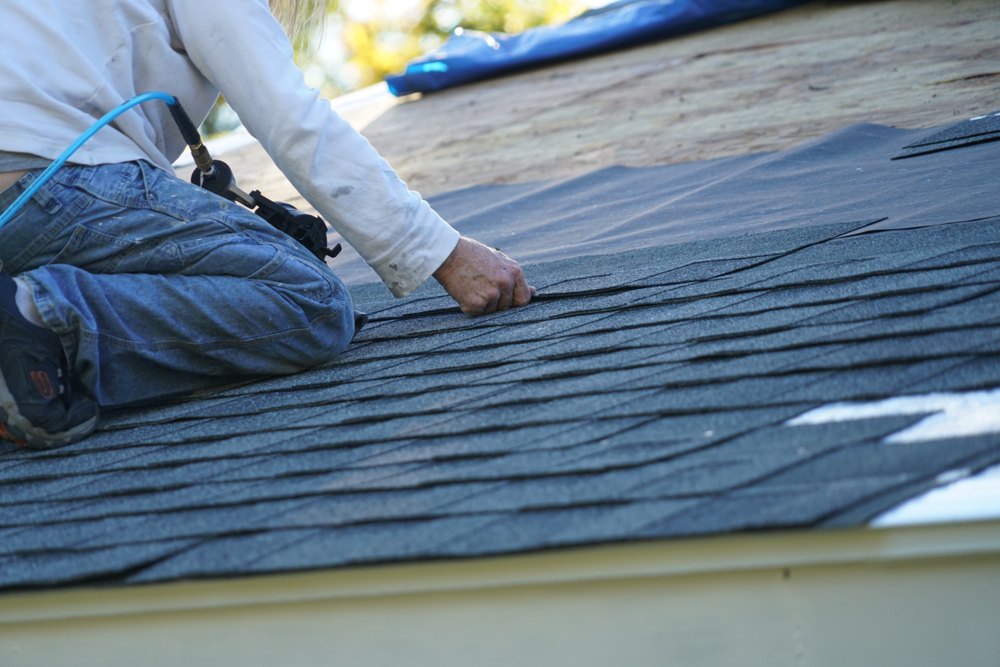
While each contractor might have a slightly different roofing process, the general framework remains the same:
- Permitting and planning: It starts with planning the project—including selecting the materials and scheduling the installation—and gathering necessary permits to remain compliant with local building codes.
- Tear-off and disposal: During this step, the roofers will remove the existing roof and dispose of old materials safely and properly. With the old roof out of the way, they’ll thoroughly inspect the underlying structure for any damage.
- Underlayment installation: Before installing your chosen material, the roofers will install a waterproof underlayment to provide an extra layer of protection against moisture. This step is essential in preventing leaks and ensuring the longevity of your roof.
- Roofing material installation: With the underlayment in place, your chosen roofing material will be installed according to manufacturer specifications. This phase varies based on the roof type.
- Ventilation and flashing: Proper ventilation is critical for maintaining roof health and energy efficiency, whereas flashing will help prevent water from seeping into your home. During this step, the roofers will install flashing and ensure proper ventilation.
- Final inspection: Once everything is wrapped up, the last step involves a final inspection to verify that everything is installed correctly and meets building codes, which is a vital part of quality assurance.
How to Find a Reputable Roofer Near You
A new roof is a significant investment, so choose a skilled, reputable roofing contractor in your area. Here are a few things to look for when considering roofers for your project:
- Make sure the roofer is licensed and insured. Both protect you, as the homeowner, in case something goes wrong. The insurance protects you from liability in case of accidents, while licenses confirm that your chosen roofer meets industry standards.
- Take a few minutes to browse through online reviews and ask your roofer for references. Insight from previous clients can give you a better idea of what to expect from the roofer, including reliability, workmanship, and customer service.
- Verify that the contractor offers detailed proposals. Hidden or undisclosed information can create problems later down the road. So, ask each contractor for a detailed proposal. At a minimum, it should include details about the scope of the work, materials used, and an expected timeline. The more detail, the better.
- The best roofers stand behind their work and offer excellent warranties. Verify that the roofer offers a warranty on both materials and labor for comprehensive protection on your new investment.
While the prospect of a new roof installation may seem daunting, it doesn’t have to be. A knowledgeable roofing contractor in your area can help you select the perfect material for your home and restore your roof to its former glory, ensuring you and the contents of your home remain safe and dry, rain or shine.
